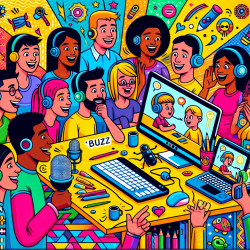Introduction
In the realm of adolescent development, understanding the factors that influence behavior is crucial for effective intervention. The study "Measuring Gambling Outcome Expectancies in Adolescents: Testing the Psychometric Properties of a Modified Version of the Gambling Expectancy Questionnaire" offers valuable insights into how outcome expectancies (OEs) can shape gambling behaviors in adolescents. This research not only highlights the psychometric robustness of a modified Gambling Expectancy Questionnaire (GEQ-MOD) but also provides a framework for practitioners aiming to improve therapeutic outcomes for youth.
Understanding Gambling Outcome Expectancies
Gambling outcome expectancies (GOEs) refer to the anticipated positive or negative outcomes from gambling behavior. These expectancies can significantly influence whether adolescents engage in gambling activities. The study underscores the socio-cultural influences on GOEs, noting that parental gambling behavior and media exposure can shape these expectancies long before any gambling behavior begins.
Modified Gambling Expectancy Questionnaire (GEQ-MOD)
The original GEQ was revised to be applicable to all adolescents, regardless of their gambling experience. This was achieved by altering the questionnaire's phrasing to hypothetical scenarios ("If you were gambling, gambling would make you...") and simplifying the response scale from a seven-point to a five-point Likert scale. These modifications enhance the tool's applicability for both research and preventive interventions.
Key Findings and Implications for Practice
The research involved two studies to test the modified scale's reliability and validity. The first study confirmed the five-factor structure of the GEQ-MOD, demonstrating its reliability and validity among Italian adolescents. The second study established the scale's invariance across different gambling behaviors and genders, making it a versatile tool for diverse adolescent populations.
For practitioners, these findings highlight the importance of assessing GOEs in therapy. By understanding an adolescent's expectancies, therapists can tailor interventions to address specific cognitive distortions and enhance the effectiveness of preventive strategies. For instance, adolescents with high positive OEs might benefit from cognitive-behavioral strategies that focus on altering these expectancies.
Encouraging Further Research
While the GEQ-MOD provides a robust tool for assessing GOEs, further research is encouraged to explore its application across different cultural contexts and age groups. Additionally, investigating the relationship between GOEs and other cognitive distortions could offer deeper insights into the mechanisms driving gambling behaviors in adolescents.
Conclusion
The modified GEQ offers a reliable and valid instrument for assessing gambling outcome expectancies in adolescents. By incorporating this tool into practice, therapists can enhance their understanding of adolescent behavior and improve intervention outcomes. As we continue to explore the intricate dynamics of adolescent development, tools like the GEQ-MOD will be invaluable in shaping effective therapeutic strategies.
To read the original research paper, please follow this link: Measuring Gambling Outcome Expectancies in Adolescents: Testing the Psychometric Properties of a Modified Version of the Gambling Expectancy Questionnaire.










